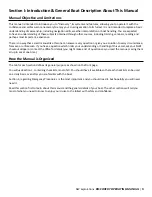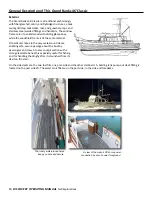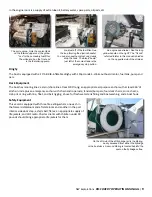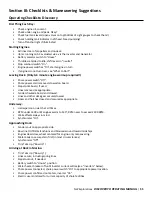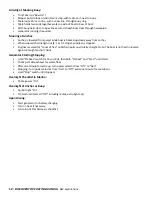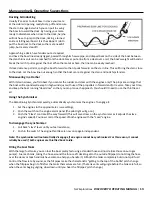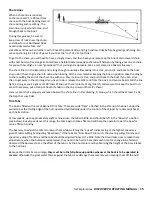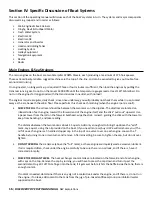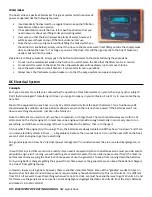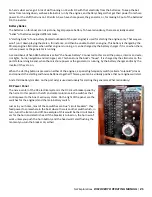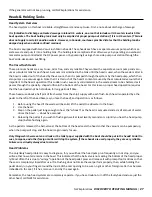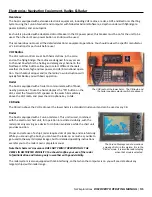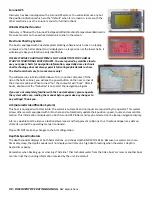
NW Explorations
DISCOVERY OPERATING MANUAL
|
17
• VISUALLY INSPECT THE ROOM
whenever you’re in the engine room, asking yourself, “Does everything look
right?”. Look at the pads under the engines and transmissions: while some drips are normal, there shouldn’t ever
be substantial accumulations of any fluids!
• CHECK THE SEA STRAINERS ONCE A WEEK,
or immediately if either engine runs “hot”. The engine strainers are
in the forward end of the engine room bilge. The refrigeration sea strainer is just forward of them. The generator
sea strainer is between the engines. To check a strainer, shine a flashlight through it. While some “fuzziness”
from trapped thin growth is normal, you should see the light clearly on the other side; if obscured, you should
clean the strainer. See below.
• CHECK THE TRANSMISSION OIL LEVEL
once every two weeks, more often if a transmission shifts erratically, with
the dipstick on the starboard side of each transmission. It is unlikely that any oil will need to be added. Be sure to
check under the transmission for leaks! Low transmission oil is a serious matter.
With the engine idling, remove the transmission dipstick. Wipe it with a towel, reinsert it, and take a reading.
If the level is below the add mark, stop the engine, add a pint of the same oil used for the engine crankcases
through the plug in the top of the transmission case, and then start the engine and measure again. Do not over-
fill, for to do so could cause the seals to “blow out”.
These CAT engines are red-lined at 2800 RPM. Maximum cruise is 2400 RPM. However, the realities of vessel hull design
and powerplant engineering dictate that higher RPM operation is very inefficient on semi-displacement vessels like this
one, so you will find these operating specifications to be true (gallons per hour, speeds, and nautical miles/gallon are
estimates):
RPM
Gallons per hour,
Total both Engines*
Speed, Knots*
Nautical Miles
per Gallon*
1400
5.0
8.00
1.6
1600
7.0
9.00
1.29
2000
14.0
11.8
.84
2400
24.0
15.0
.625
As you can see, each extra knot is very expensive once you have passed “displacement speed” on the vessel hull; this is
not a “planing” boat! It is sensible to operate the boat in the 1600-1800 RPM range, and you’ll enjoy quieter, more pleas-
ant cruising and economy, too!
Sea Strainer Cleaning and Seacocks
The engine, generator and refrigeration cooling systems from water-borne debris which might block internal equipment
passages. If a sea strainer needs cleaning (see above regarding inspection) here is the procedure:
1. Look at the base of the strainer near the hull. On one side is a valve lever with a relatively long handle; on the
other side is a “T”-shaped knob. Loosen the T-knob two turns. The valve itself may begin to “weep” sea water, do
not be alarmed.
2. Turn the longer valve lever so it is perpendicular to the sea strainer (parallel to the hull).
3. Tighten the T-handle; the weeping will stop.
4. Using the same spanner you use for the fuel and water tank deck caps, unscrew the top of the sea strainer. Then
remove the strainer by pulling it out the top of the assembly. Rinse the strainer thoroughly and, if necessary,
remove any debris from the glass housing.
5. Reinsert the strainer, tighten the top cover with the spanner, AND TURN THE VALVE BACK ON — failure to do so
will overheat the engine. BE SURE TO TIGHTEN THE T-KNOB ON THE VALVE SO IT IS SECURE.
This entire operation will take 5-10 minutes at most, and will assure you of cool engines.

